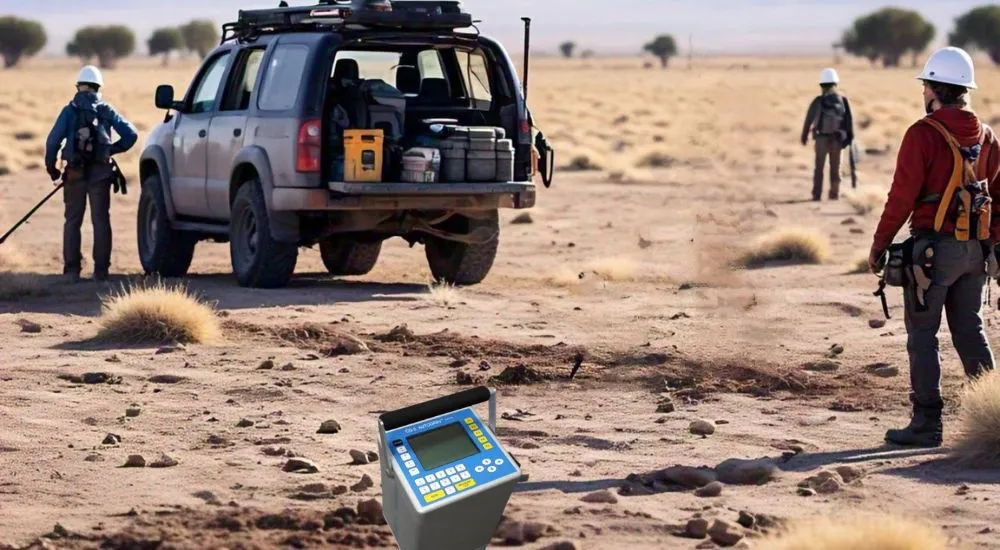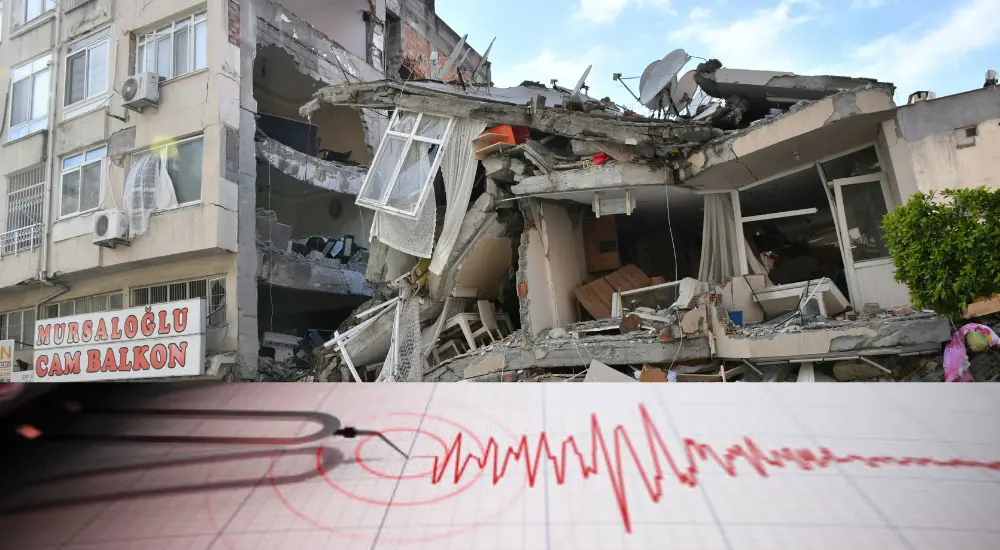21. What is the main purpose of terrain correction in gravity methods?
(A) To eliminate the effect of Earth’s rotation
(B) To account for topographic irregularities near the measurement site
(C) To adjust for variations in Earth’s magnetic field
(D) To correct for latitude-related gravity variations
(B) To account for topographic irregularities near the measurement site
Explanation: Terrain correction adjusts for the gravitational influence of nearby hills and valleys, ensuring that the gravity data accurately reflect subsurface density variations.
22. What does a residual anomaly represent in gravity methods?
(A) A gravity variation caused by Earth’s rotation
(B) A localized gravity anomaly after removing regional trends
(C) An uncorrected gravity measurement
(D) A magnetic anomaly in the gravitational data
(B) A localized gravity anomaly after removing regional trends
Explanation: Residual anomalies are localized variations in gravity data after subtracting regional trends, often indicating near-surface features.
23. Which geological structure would most likely cause a positive gravity anomaly?
(A) A sediment-filled basin
(B) A salt dome
(C) A metallic ore body
(D) A void or cavity
(C) A metallic ore body
Explanation: Dense materials, such as metallic ore bodies, increase the gravitational acceleration, resulting in a positive gravity anomaly.
24. Why are latitude corrections necessary in gravity surveys?
(A) To adjust for instrument drift over time
(B) To compensate for variations due to Earth’s shape and rotation
(C) To remove effects of nearby terrain
(D) To account for atmospheric pressure changes
(B) To compensate for variations due to Earth’s shape and rotation
Explanation: Gravity varies with latitude because the Earth is not a perfect sphere (it is an oblate spheroid), and its rotation slightly reduces gravity at the equator compared to the poles.
25. What is the relationship between gravity and distance from the Earth’s centre?
(A) Gravity increases with distance
(B) Gravity decreases with distance
(C) Gravity remains constant
(D) Gravity fluctuates unpredictably
(B) Gravity decreases with distance
Explanation: Gravity decreases with the square of the distance from the Earth’s center, as described by Newton’s law of gravitation.
26. What type of data is collected in gravity surveys?
(A) Gravitational acceleration values
(B) Magnetic field intensity
(C) Seismic wave velocities
(D) Electrical resistivity
(A) Gravitational acceleration values
Explanation: Gravity surveys collect data on variations in gravitational acceleration, which are used to infer subsurface density differences.
27. How is gravity data used in petroleum exploration?
(A) To locate magnetic anomalies
(B) To identify low-density sedimentary basins
(C) To detect seismic activity
(D) To measure groundwater levels
(B) To identify low-density sedimentary basins
Explanation: Gravity methods are used to detect low-density sedimentary basins that may contain petroleum deposits.
28. What is the expected gravity anomaly of a high-density subsurface feature?
(A) No anomaly
(B) Negative anomaly
(C) Positive anomaly
(D) Fluctuating anomaly
(C) Positive anomaly
Explanation: High-density subsurface features, such as igneous intrusions, create positive gravity anomalies due to their stronger gravitational pull.
29. Which correction in gravity methods adjusts for instrument-related variations over time?
(A) Drift correction
(B) Bouguer correction
(C) Free-air correction
(D) Latitude correction
(A) Drift correction
Explanation: Drift correction is applied to gravity data to remove errors caused by gradual changes in the sensitivity of the gravimeter over time.
30. What is the Bouguer correction primarily used for in gravity surveys?
(A) To account for latitude variations
(B) To correct for the mass of the topography above the measurement point
(C) To eliminate the effect of Earth’s rotation
(D) To adjust for changes in atmospheric pressure
(B) To correct for the mass of the topography above the measurement point
Explanation: The Bouguer correction removes the gravitational effect of the mass between the measurement point and sea level, ensuring that gravity readings reflect subsurface features.
31. In which geological setting would you expect a gravity low?
(A) Over a dense mafic intrusion
(B) Over a high-density ore deposit
(C) Over a sedimentary basin
(D) Over a volcanic dyke
(C) Over a sedimentary basin
Explanation: Sedimentary basins typically have lower densities compared to surrounding rocks, resulting in gravity lows.
32. Which instrument is commonly used to measure gravitational acceleration in geophysical surveys?
(A) Gravimeter
(B) Magnetometer
(C) Seismometer
(D) Barometer
(A) Gravimeter
Explanation: A gravimeter is a sensitive instrument used to measure variations in gravitational acceleration at different locations.
33. Why are gravity anomalies typically expressed in milli gals (mgal)?
(A) To correct for latitude and elevation differences
(B) Because gravity variations on Earth are small and require finer units
(C) To standardize measurements across instruments
(D) To account for atmospheric effects
(B) Because gravity variations on Earth are small and require finer units
Explanation: Earth’s gravity variations are typically in the range of milligals, necessitating the use of smaller units for accurate representation.
34. What is the primary purpose of a gravity survey in mineral exploration?
(A) To identify magnetic anomalies
(B) To locate subsurface density variations indicating ore bodies
(C) To map water-bearing formations
(D) To study seismic wave propagation
(B) To locate subsurface density variations indicating ore bodies
Explanation: Gravity surveys help identify density contrasts in the subsurface, which may indicate the presence of mineral deposits.
35. What is a free-air anomaly?
(A) A gravity reading without any corrections applied
(B) A corrected value accounting for elevation but not density
(C) An anomaly caused by nearby bodies of water
(D) A regional gravitational effect
(B) A corrected value accounting for elevation but not density
Explanation: A free-air anomaly is the gravity measurement corrected for elevation differences, assuming there is no material between the measurement point and sea level.
36. Which region of Earth is likely to exhibit the highest gravity values?
(A) The equator
(B) The poles
(C) Mid-ocean ridges
(D) Deep sedimentary basins
(B) The poles
Explanation: Gravity is strongest at the poles due to Earth’s oblate shape and centrifugal force reduction from rotation.
37. What is the main advantage of using airborne gravity surveys?
(A) High resolution for small-scale features
(B) Rapid coverage of large areas
(C) Elimination of topographic corrections
(D) Ability to detect magnetic anomalies
(B) Rapid coverage of large areas
Explanation: Airborne gravity surveys are efficient for covering large and inaccessible areas quickly, although they provide less resolution compared to ground-based surveys.
38. How does the Earth’s crustal thickness affect gravity measurements?
(A) Thicker crust causes higher gravity values
(B) Thicker crust causes lower gravity values
(C) Crustal thickness does not affect gravity
(D) Crustal thickness only affects magnetic data
(B) Thicker crust causes lower gravity values
Explanation: Thicker crust generally has lower density compared to the mantle, resulting in lower gravity values over regions with thicker crust.
39. What is a “microgravity survey” primarily used for?
(A) Exploring deep crustal features
(B) Detecting small-scale density variations like voids or tunnels
(C) Mapping large-scale tectonic structures
(D) Studying variations in magnetic susceptibility
(B) Detecting small-scale density variations like voids or tunnels
Explanation: Microgravity surveys are highly sensitive and used for detecting small-scale subsurface features such as voids, cavities, or archaeological structures.
40. What is the relationship between gravity and distance from the Earth’s center?
(A) Gravity increases with distance
(B) Gravity decreases with distance
(C) Gravity remains constant
(D) Gravity fluctuates unpredictably
Detecting small-scale density variations like voids or tunnels
Explanation: Microgravity surveys are highly sensitive and used for detecting small-scale subsurface features such as voids, cavities, or archaeological structures.










